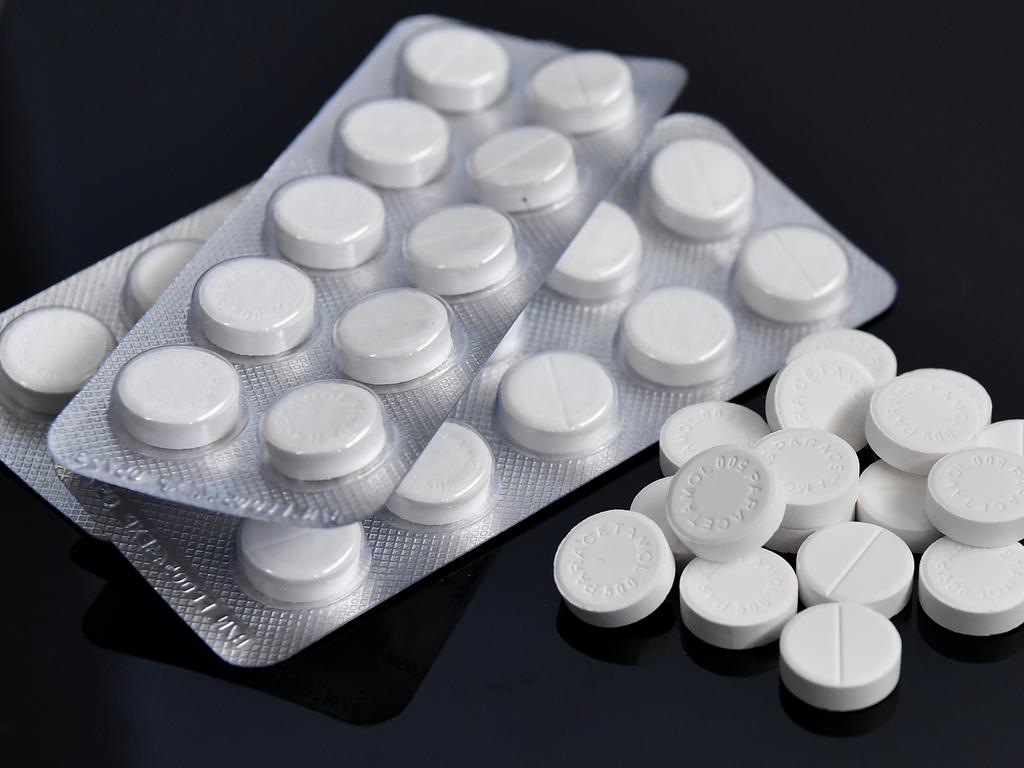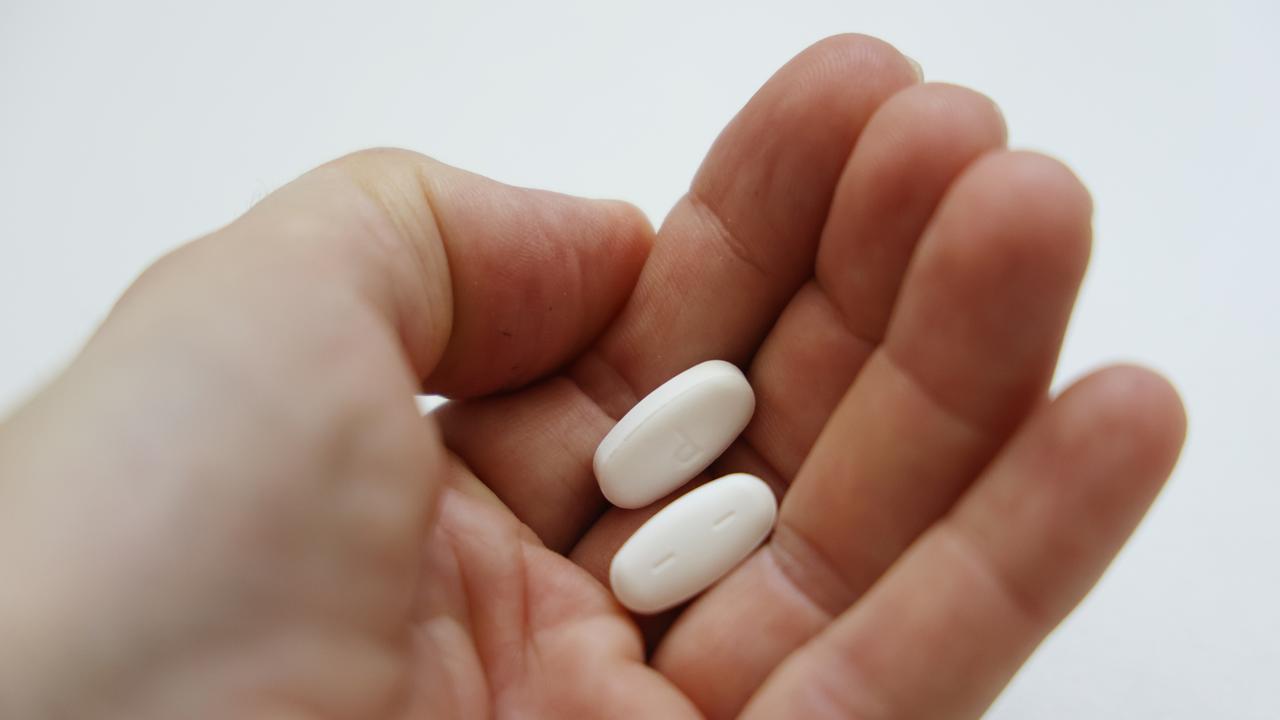Paracetamol packets to shrink as doctors warn Aussies not to just subsitute with other pain relievers
The way Australians buy paracetamol is set to change, as experts warn people of the dangers of switching to alternate painkillers. See how it affects you.
Big changes to the way Australians buy paracetamol are coming on February 1, when a new ruling from the Therapeutic Goods Administration takes effect.
And an Australian pain expert has warned people against automatically changing to ibuprofen, another readily available pain reliever that has not been included in the changes.
From February 1, paracetamol pack sizes will shrink significantly on the shelves of supermarkets, convenience stores and pharmacies – and patients will have to ask the pharmacist if they want a pack containing 50 or more tablets or capsules (up to 100).
Currently pack sizes of up to 100 tablets or capsules are readily available on the shelves of Australian pharmacies. Ibuprofen is similarly available in pack sizes of up to 96 tablets or capsules off the shelf, and this will not change.
The TGA’s move is a response to concerns about the number of Australians impacted every year by paracetamol overdose.
“Each year in Australia around 225 people are hospitalised with liver injury and 50 Australians die from paracetamol overdose, with rates of intentional overdose highest among adolescents and young adults,” the TGA said in a statement.
“This decision aims to reduce the harm from intentional overdose.”

The decision has met mixed reactions from pain experts and patient advocacy groups who believe it will make access harder and more expensive for people who legitimately need the medicine, while the peak doctor’s group the Royal Australian College of General Practitioners has welcomed it as a step towards safer use of the medicine, albeit perhaps not far enough.
Associate Professor Michael Vagg, a consultant in rehabilitation and pain medicine and director of Pain Matrix in Melbourne, warned the change could mean patients might switch to other pain relievers like ibuprofen given that the larger pack sizes will remain on pharmacy shelves.
“The obvious concern is that people who are frequent or regular users of pain relievers will switch to ibuprofen without checking if it is safe to do so,” he said.
“ibuprofen is one of the safest NSAIDs (non-steroidal anti-inflammatory drugs) but still comes with the risks of stomach lining erosion and ulcer formation, as well as a small but definite increase in risk of heart attack and stroke, and a well-recognised risk of kidney damage with high long-term use.
“When aspirin was all people had, Australia was a world leader in recognising the risk of kidney damage from problematic aspirin use, and we are concerned that these lessons may be forgotten.”
Professor Vagg urged patients to talk to their doctor about their paracetamol use, especially if they were regular users.

“If you benefit from taking it by the clock rather than according to the pain, which is a
common strategy for osteoarthritis patients, ask your GP for a prescription to access a regular supply or discuss other medication or management options for your condition,” he said.
“We agree with the TGA’s overall approach of trying to minimise the potential for the small number of overdose deaths and injuries due to paracetamol, but we are concerned that the potential unintended consequences have not been adequately planned for.
“Paracetamol is much safer for the casual user but more dangerous in an overdose situation.
“We encourage common sense and collaboration with healthcare professionals to make sure the needs of pain patients are addressed at the same time as overdose risk is reduced.”
The TGA has published a blog post to promote the safe purchase and usage of paracetamol.
PARACETAMOL CHANGES ACROSS THE COUNTRY
From February 1, the new restrictions on paracetamol in Australia will include:
- A reduction in the maximum size of packs available for general sale (for example in supermarkets and convenience stores) from 20 to 16 tablets or capsules.
- A reduction in the maximum size of packs available in pharmacies without the supervision of a pharmacist – that is directly off the shelf. These packs will be limited to a maximum of 50 tablets or capsules and will be labelled “Pharmacy Only” medicines.
- Other pack sizes of more than 50 up to 100 tablets or capsules will be available only under the supervision of a pharmacist. These will be labelled “Pharmacist Only” medicines.
- Paracetamol tablets and capsules (also known as caplets) will also be required to be in blister packaging. Bottles containing the medicine will no longer be available.
DIFFERENCES IN QUEENSLAND / WESTERN AUSTRALIA
A TGA spokesperson said there would be some differences in how the paracetamol controls would be implemented in Western Australia and Queensland “due to existing differences in requirements for how Pharmacy medicines (Schedule 2) can be displayed and supplied”.
From February 1, in Queensland and Western Australia, paracetamol will be available:
- On shelves in pharmacies in packs of up to 16 tablets or caplets.
- Behind the counter in pharmacies for packs containing more than 16 tablets or caplets, requiring an interaction with a pharmacist to purchase.
More Coverage
Originally published as Paracetamol packets to shrink as doctors warn Aussies not to just subsitute with other pain relievers




